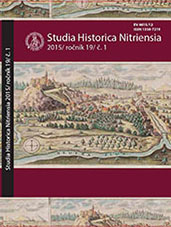Duchovná útecha na popravisku v novoveku
The Religious Consolation on the Place of Execution in the Modern Age
Author(s): Peter ZubkoSubject(s): History
Published by: Univerzita Konštantína Filozofa v Nitre, Filozofická fakulta
Keywords: the death penalty; Martin von Cochem; catholic rituals
Summary/Abstract: The death penalty is a part of human history. In describing of executions find priests or monks, in images of executions seen priests with various religious gestures. In Europe in the Middle Ages was developed a custom to provide sentenced to death spiritual consolation. In the middle ages and in modern times the ceremony was the some, but until the 17th century we have retained the full text of spiritual consolation of the condemned men to death by Capuchin Martin von Kochem. In the 19th century the text of the ritual was translated into Slovak. This article presents a Catholic doctrine of the death penalty, justification for the presence of the priests on the scaffold, the most famous historical reports of the presence of the priests on the scaffold and the whole ceremony spiritual consolation of the condemned men, as was used in old Hungary and Europe in the 17th – 20th centuries. The oldest known ritual has German origin and Hungarian and Slovak version prepared a military priest Francis Tannenberg. It is not certain that the ritual was always and everywhere used whole, present priests sometimes adapted it to the situation, but often managed to recover a few moments necessary to spiritually prepare inmates to death and meeting with God.
Journal: Studia Historica Nitriensia
- Issue Year: 19/2015
- Issue No: 1
- Page Range: 118-132
- Page Count: 15

